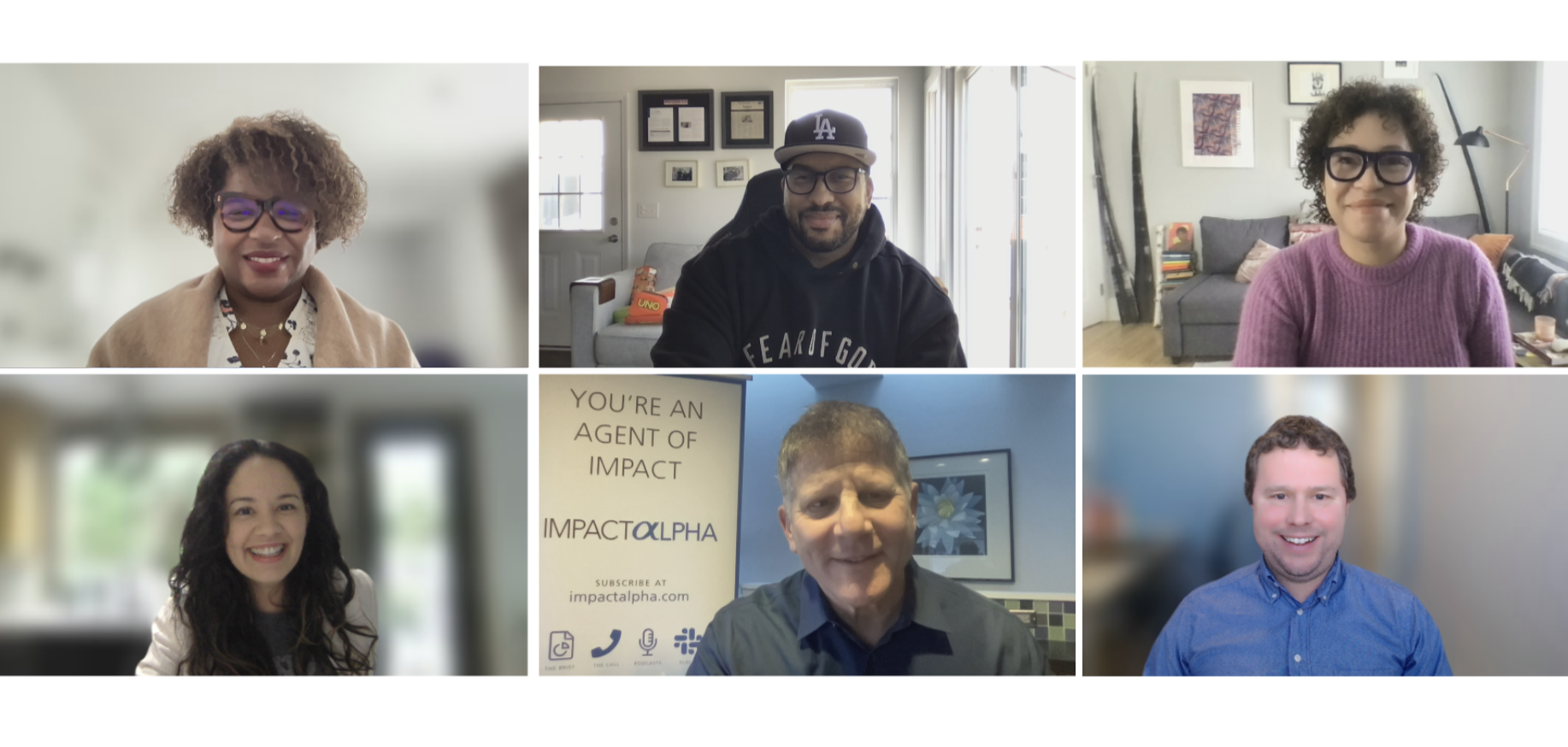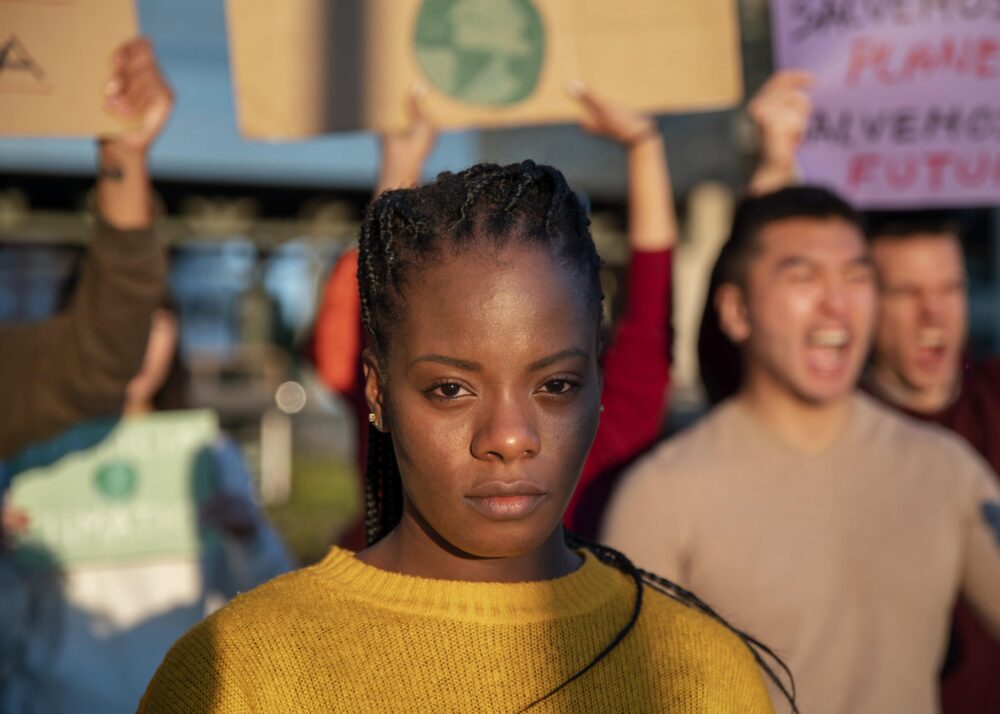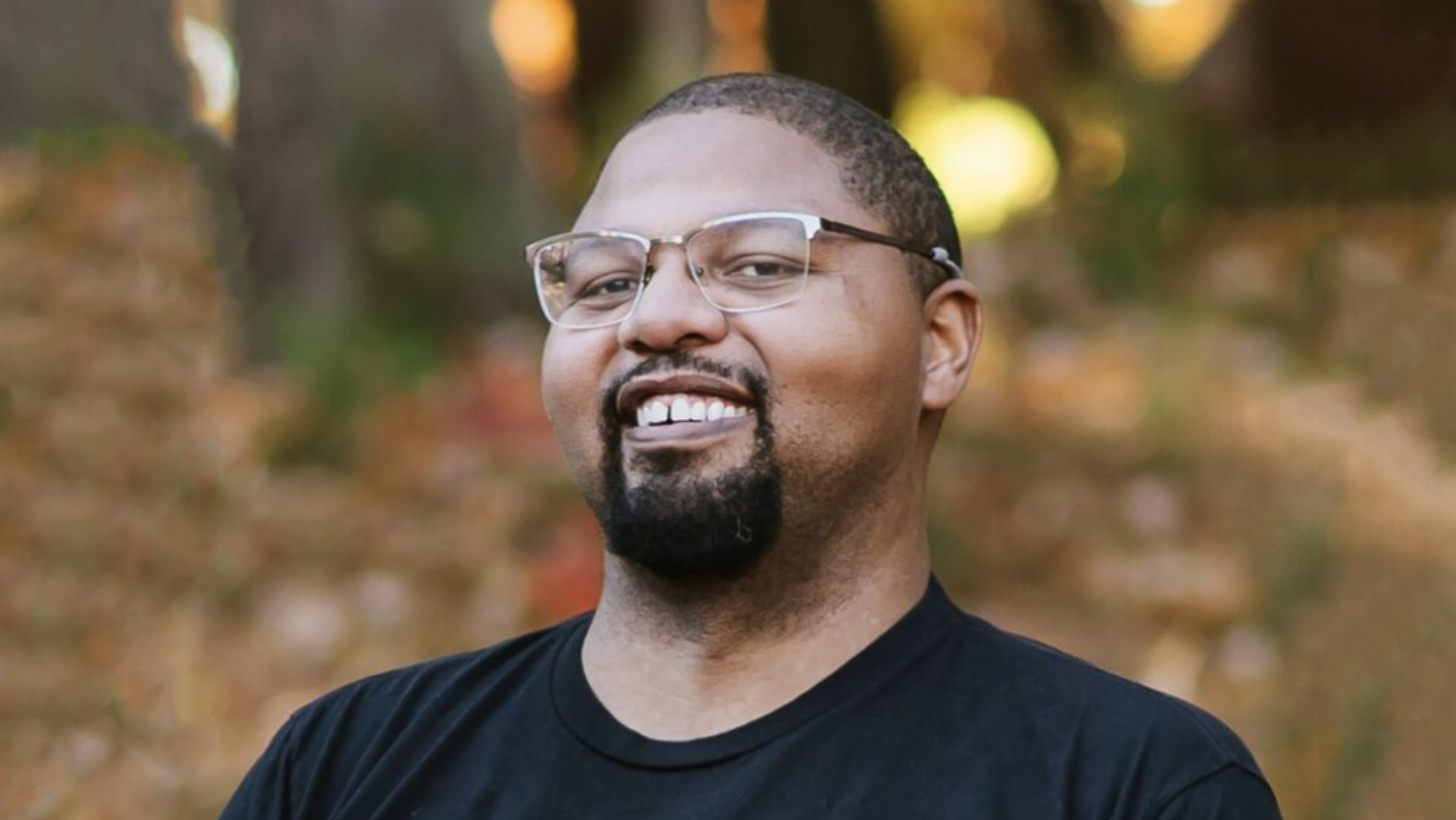ImpactAlpha, Mar. 28 – If the world manages in the coming decades to avert the worst-case climate catastrophe, it will be the result of one of the most ambitious coordinations in human history. The common metric: the reduction, in tons, of emissions of carbon dioxide and other greenhouse gasses.
What is the equivalent of CO2 for the equally urgent and complex challenges of racial equity and wealth-building?
“We are striving for a similar movement around racial justice for Black Americans,” Southern Reconstruction Fund’s Napoleon Wallace tells ImpactAlpha, which will take up the challenge in this week’s Agents of Impact Call (RSVP now).
Welcome to Metrics Madness.
“The goal of this competition is to get closer to finding the best metric for racial justice that will serve to advance impact investment efforts,” Wallace says.
Southern Reconstruction Fund has a practical reason for identifying such a metric. It has begun deploying capital from its Ownership and New Equity Fund, or FundONE, to emerging fund managers with provocative strategies for building racial wealth and bridging racial gaps. Wallace wants to know how to tell whether such strategies are working, and thus whether FundONE itself is succeeding. Wallace hopes the exercise will be of value to allies and collaborators pursuing their own complementary strategies (see, “Tracking investment theses against the promise of Reconstruction”).
“This is not to discount the importance of the many unique frameworks and other metrics being utilized,” he says (see below). Rather, it will complement such efforts with “a distilled singular indicator on improvement towards racial justice.”
Quality Adjusted Life Years
In developing FundONE’s goals for impact across health, economic mobility, workforce, education, environment and “public kinship,” Wallace and his partner, Dorian Burton, found a universe of possible metrics to assess individual investments and initiatives
‘What we haven’t been able to uncover is a pool of metrics that have such universality that they remain a meaningful measure of impact across investments,” Wallace says. “Or a metric that could act as a common standard of exchange that would allow us to interpret many metrics with a single measure.”
One health economist recommended the use of Quality Adjusted Life Years, an established (and sometimes controversial) metric of clinical efficacy that determines the impact of an intervention by assessing the ensuing duration and quality of life for patients after the intervention.
Can such a metric, disaggregated by race, be applied to a wider set of social interventions?
“There are few impact goals that are as universal as a longer and happier life, and there are few outputs or outcomes that cannot be attributable to the estimated length and duration of life,” Wallace says. “I like the infrastructure and science behind QALYs. And the aspiration of delivering longer healthier and happier lives is pretty all-encompassing as an outcome.”
Wisdom of the Crowd
Agents of Impact contributed dozens of submissions in the two-week sprint to Metrics Madness. On Wednesday’s call, we’ll consider their availability, suitability, scalability, convertibility, verifiability and adoptability.
Assets growth. Caitlin Rosser of Calvert Impact cut to the chase: increase in assets held by end-users or clients. “This is THE metric to use to measure growth in wealth on an individual client basis,” she says. “And that’s what we’re trying to affect: increase in wealth (as measured by assets) for BIPOC clients.”
Racial pay gaps. Nuveen’s Roberta Lobo says the mean racial pay gap for full-time employees, like the mean gender pay gap, can tell a deeper story about a company’s commitment to social equity. “Companies that hire, include, and advance a workforce that matches the clients they are seeking to serve are often better performers financially,” she says.
Retirement accounts. Dimitri Triantafyllides of Sixty Guilders Management wants to track the percentage of a population or demographic (segmented by age) that participates in a 401k or IRA-type retirement investment plan. “That would help measure access to financial products, measure personal independence from government funded programs, and measure individual ability for self-improvement,” he says.
Community engagement. Catherine Dun Rappaport of Social Finance considered the well-known “spectrum of community engagement,” applied a racial equity lens, and collapsed the framework to work in an impact investing context. “Engaging communities impacted by investing can mitigate impact risk,” she says. Rappaport advocates measuring such engagement on a two-by-two rubric identifying BIPOC community control over projects, goods and services, and whether such efforts are designed in response to needs articulated by the community. While at Blue Hub Capital, Rappaport developed the “Racial Equity Assessment that is Proactive and Practical, or REAPP.
Learning environment. William Jackson, the “chief dreamer” of Village of Wisdom, recommends an assessment of whether children perceive a culturally affirming learning environment. “Students’ perceptions of this correlate to increased attendance and academic scores and lower suspensions,” Jackson says. “If sustained across a student’s academic life, it would mean greater academic attainment and ultimately greater earning potential, which is critical to closing the racial wealth gap.”
Asset management. Toniic’s Adam Bendell reported on the organization’s approach, informed by the work of the Donors of Color Network’s Climate Justice Pledge. Investing for racial equity, Bendell said, should be tracked on the percentage of assets managed by majority asset-managers or color; the percentage of assets invested in enterprises majority-owned and led by people of color; and the percentage of assets invested in enterprises in which at least 50% of customers live in marginalized communities.
Commercial real estate. Track the percentage of BIPOC businesses that own business-purpose real estate, suggests Partners in Equity’s Talib Graves-Manns.
Land ownership. Mikki Sager, formerly with the Conservation Fund, points to changes in the ownership and control of land, especially in rural areas.
Quality jobs. Shruti Goel, director of impact measurement and management at Upaya Social Ventures has a well-developed method for measuring the number and quality of jobs created for the extremely poor.
Emergency room usage. Ben Bingham of 3Sisters Sustainable Management argues that reductions in the use of emergency rooms by uninsured and underinsured patients can serve as a stand-in to measure broader social determinants of health.
Generative AI
The wisdom of the crowd these days includes the wisdom, or at least the intelligence of the increasingly powerful engines of generative artificial intelligence. ImpactAlpha asked an impact AI startup, Syntegral, to query its proprietary chatbot for the most relevant investment strategies for bridging racial wealth gaps and accelerating racial wealth-building. The chatbot mapped the suggestions against actual metrics in frameworks such as IRIS+ and the Sustainable Development Goals.
“This is just a very early use-case,” Syntegral’s Vijak Haddadi tells ImpactAlpha. “We can significantly expand this and, for example, draw on research from evidence portals to back up the validity of certain strategies, or assess how activities of certain companies contribute to the selected theme of racial wealth-building.” The chatbot’s first cut:
- Asset-building models. Experiment with matched savings, individual development accounts (IDAs), and new lending models to help low-income families own their homes and build wealth.
- Banking and credit reform. Expand the Federal Credit Union System to provide better banking alternatives for low-income families, end predatory lending, and offer better lending terms and higher interest rates on savings.
- Support for low-wage workers. Implement public policies that provide better support for low-wage workers and children, preparing them for the labor market of tomorrow.
- Education and employment opportunities. Invest in programs and partnerships that increase college completion rates, close achievement gaps for low-income and minority students, and create alternative pathways for those who historically faced discrimination or lacked social connections in certain sectors.
- Community investment and economic mobility. Focus on improving places while fostering economic mobility through housing choice, desegregation, and addressing historic inequality and institutional racism. Test saturation-level interventions in small areas to determine their impact on communities and explore strategies to help low-income families afford higher rents in growing neighborhoods.
Toolkits and frameworks
The quest for the Holy Grail, of course, has occasioned a host of misadventures. Racial equity investment involves a complex set of interrelated considerations.
The recently released Investor Blueprint for Racial and Economic Equity, developed by PolicyLink in partnership CapEQ and FSG, for example, frames aspirational 10 outcomes, including balance in power and leadership positions, wealth generation and social and economic mobility and a thriving multiracial democracy. To reach such outcomes, the blueprint identifies three levers and five broad goals (see, “Ten outcomes and three levers for investors in racial and economic equity”).
Other useful frameworks:
- Black Progress Index from Brookings and the NAACP includes a handy search feature to explore dimensions of Black health and wealth in counties and metropolitan areas across the U.S. The index focuses on life expectancy and the “social determinants of health,” including home and business ownership, education and air pollution.
- Racial Equity Assessment that is Proactive and Practical, or REAPP, from Blue Hub Capital in Boston aims to help lenders go beyond simple demographics to understand how projects may or may not support racial equity.
- Racial Equity Impact Rating Tool, designed by the Racial Equity Asset Lab and adapted from the Advancing the Mission toolkit of the Annie E. Casey Foundation evaluates policies and practices on a scale from “color-blind” to “diversity-only” to “race tentative” to “equity focused.”
- Racial Wealth Gap Toolkit from Neighborhood Economics includes 10 strategies, including inclusionary zoning, anti-gentrification campaigns and “money sharing communities.”
- Municipal Issuer Racial Equity & Inclusion Engagement Framework, from Just Capital builds on discussions with asset managers to help issuers of municipal bonds “seize an opportunity to both engage and strengthen ties with the communities they serve.”
- African American Equity Scorecard from the Alliance of African American CDFI CEOs measures and scores financial institutions’ for “activities that support the achievement of community development and wealth creation of Black communities.”





